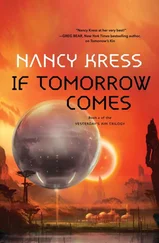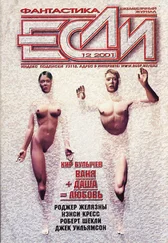She dashed away the stupid tears and headed back to work.
S minus 8.5 months
The auditorium on the Embassy had the same thin, rice paper–like walls as some of the other non-lab rooms, but these shifted colors like some of the more substantial walls. Slow, complex, subtle patterns in pale colors that reminded Marianne of dissolving oil slicks. Forty seats in rising semicircles faced a dais, looking exactly like a lecture room at her college. She had an insane desire to regress to undergraduate, pull out a notebook, and doodle in the margin. The seats were filled not with students chewing gum and texting each other, but with some of the planet’s most eminent scientists. This was the first all-hands meeting of the scientists aboard. The dais was empty.
Three Denebs entered from a side door.
Marianne had never seen so many of them together at once. Oddly, the effect was to make them seem more alien, as if their minor differences from Terrans—the larger eyes, spindlier limbs, greater height, coppery skin—increased exponentially as their presence increased arithmetically. Was that Ambassador Smith and Scientist Jones? Yes. The third alien, shorter than the other two and somehow softer, said through the translator in the ceiling, “Thank you all for coming. We have three reports today, two from Terran teams and one from World. First, Dr. Manning.” All three aliens smiled.
Terrence Manning, head of the Spore Team, took the stage. Marianne had never met him, Nobel Prize–winners usually being as far above her scientific level as the sun above mayflies. A small man, he had exactly three strands of hair left on his head, which he tried to coax into a comb-over. Intelligence shone through his diffident, unusually formal manner. Manning had a deep, authoritative voice, a welcome contrast to the mechanical monotony of the ceiling.
From the aliens’ bright-eyed demeanor, Marianne had half expected good news, despite the growing body of data on the ship’s LAN. She was wrong.
“We have not,” Manning said, “been able to grow the virus in cell cultures. As you all know, some viruses simply will not grow in vitro, and this seems to be one of them. Nor have we been able to infect monkeys—any breed of monkey—with spore disease. We will, of course, keep trying. The better news, however, is that we have succeeded in infecting mice.”
Good and bad, Marianne thought. Often, keeping a mouse alive was actually easier than keeping a cell culture growing. But a culture would have given them a more precise measure of the virus’s cytopathic effect on animal tissue, and monkeys were genetically closer to humans than were mice. On the other hand, monkeys were notoriously difficult to work with. They bit, they fought, they injured themselves, they traded parasites and diseases, and they died of things they were not supposed to die from.
Manning continued, “We now have a lot of infected mice and our aerosol expert, Dr. Belsky, has made a determination of how much exposure is needed to cause spore disease in mice under laboratory conditions.”
A graph flashed onto the wall behind Manning: exposure time plotted versus parts per million of spore. Beside Marianne, Evan’s manicured fingers balled into a sudden fist. Infection was fast, and required a shockingly small concentration of virus, even for an airborne pathogen.
“Despite the infected mice,” Manning went on, and now the strain in his voice was palpable, “we still have not been able to isolate the virus. It’s an elusive little bugger.”
No one laughed. Marianne, although this was not her field, knew how difficult it could be to find a virus even after you’d identified the host. They were so tiny; they disappeared into cells or organs; they mutated.
“Basically,” Manning said, running his hand over his head and disarranging his three hairs, “we know almost nothing about this pathogen. Not the ‘R naught’—for you astronomers, that is the number of cases that one case generates on average over the course of its infectious period—nor the incubation period nor the genome nor the morphology. What we do know are the composition of the coating encapsulating the virus, the transmission vector, and the resulting pathology in mice.”
Ten minutes of data on the weird, unique coating on the “spores,” a term even the scientists, who knew better, now used. Then Dr. Jessica Yu took Manning’s place on the dais. Marianne had met her in the cafeteria and felt intimidated. The former head of the Special Pathogens branch of the National Center for Infectious Diseases in Atlanta, Jessica Yu was diminutive, fifty-ish, and beautiful in a severe, don’t-mess-with-me way. Nobody ever did.
She said, “We, are, of course, hoping that gaining insight into the mechanism of the disease in animals will help us figure out how to treat it in humans. These mice were infected three days ago. An hour ago they began to show symptoms, which we wanted all of you to see before… well, before.”
The wall behind Jessica Yu de-opaqued, taking the exposure graphic with it. Or some sort of viewscreen now overlay the wall and the three mice now revealed were someplace else in the Embassy . The mice occupied a large glass cage in what Marianne recognized as a BSL4 lab.
Two of the mice lay flat, twitching and making short whooshing sounds, much amplified by the audio system. No, not amplified—those were desperate gasps as the creatures fought for air. Their tails lashed and their front paws scrambled. They were, Marianne realized, trying to swim away from whatever was drowning them.
“In humans,” Yu continued, “we would call this ARDS—adult respiratory distress syndrome, a catchall diagnosis used when we don’t know what the problem is. The mouse lung tissue is becoming heavier and heavier as fluid from the blood seeps into the lungs and each breath takes more and more effort. X-rays of lung tissue show ‘whiteout’—so much fluid in the lungs increasing the radiological density that the image looks like a snowstorm. The viral incubation period in mice is three days. The time from onset of symptoms until death averages two-point-six hours.”
The third mouse began to twitch.
Yu continued, her whole tiny body rigid, “As determined thus far, the infection rate in mice is a hundred percent. We can’t, of course, make any assumptions that it would be the same in humans. Nor do we have any idea why some species of mice are infected but others are not. Rats are not susceptible, nor are monkeys. The medical data made available from the Deneb colonies do indicate involvement of similar metabolic pathways in Denebs to those of the mice. Those colonies had no survivors. Autopsies on the infected mice further indicate—”
A deep nausea took Marianne, reaching all the way from throat to rectum. She was surprised; her training was supposed to inure her. It did not. Before her body could disgrace her by retching, she squeezed past Evan with a push on his shoulder to indicate he should stay and hear the rest. In the corridor outside the auditorium she leaned against the wall, lowered her head between her knees, breathed deeply, and let shame overcome horror.
No way for a scientist to react to data—
The shame was not strong enough. It was her children that the horror brought: Elizabeth and Ryan and Noah, mouths open as they tried to force air into their lungs, wheezing and gasping, drowning where they lay… and Connie and the as-yet-unborn baby, Marianne’s first grandchild….
Stop. It’s no worse for you than for anybody else.
Marianne stood. She dug the nails of her right hand into the palm of her left. But she could not make herself go back into the auditorium. Evan would have to tell her what other monstrosities were revealed. She made her way back to her lab.
Читать дальше












